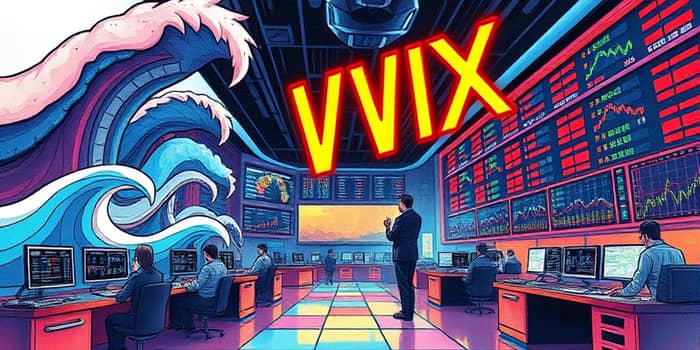
In today’s fast-paced markets, volatility is not just a shock factor—it’s a tradable dimension that savvy investors can harness. The CBOE Volatility Index, or VIX, often dubbed the fear index, reflects market expectations of 30-day volatility and moves inversely to the S&P 500. By understanding this gauge and learning to trade VIX-linked products, you can turn market turbulence into potential profit.
Whether you’re a hedge fund manager seeking portfolio diversification or a retail trader looking to hedge losses, mastery of VIX-linked securities offers a unique edge. This article guides you through definitions, instruments, mechanics, strategies, and risks, empowering you to make informed decisions in a world where uncertainty reigns.
The VIX measures the market’s annualized implied volatility over the next 30 days, derived from S&P 500 option prices. It’s calculated by interpolating between two expiration dates and applying a weighted sum of call and put premiums, then annualizing the result. When VIX levels rise, traders expect larger price swings; when they fall, calm markets are anticipated.
Historically, the VIX trades between 12 and 20 in stable conditions but can spike above 80 during crises, as witnessed in March 2020. This negative correlation with the broader market makes the VIX a reliable barometer of investor sentiment and risk appetite.
You cannot buy the VIX index directly. Instead, exposure comes via derivatives and exchange-traded products (ETPs). The CBOE introduced VIX futures in 2004 and options in 2006, unlocking a new asset class based purely on volatility. Institutional players and sophisticated retail traders now deploy these tools for:
By incorporating these instruments, investors can guard against losses when markets tumble, adopting volatility as a form of insurance.
VIX exposure comes in several flavors, each designed to fit different trading styles and risk appetites:
Below is a summary of popular VIX-linked products and their core attributes:
Before trading, grasp these pivotal concepts:
These factors influence pricing, returns, and risk, and should shape your trade management and position sizing.
Successful volatility traders blend timing, position management, and risk controls:
Each approach demands vigilance: volumes spike around macro events, and bid-ask spreads can widen dramatically under stress.
While VIX-linked securities offer powerful tools, they carry inherent dangers. Long-term investors often face performance drag due to persistent contango. Leveraged and inverse ETPs can deviate significantly from underlying futures over extended periods, making them unsuitable for buy-and-hold strategies.
Market microstructure risks include liquidity crunches and widened spreads during turbulent sessions. Shorting inverse products requires margin and may expose you to margin calls and forced liquidation if volatility spikes. Always monitor roll schedules and understand product structure before committing capital.
Trading volatility with VIX-linked securities melds art and science. By mastering index mechanics, product features, and strategic applications, you can harness market fear and turbulence as an asset class. Whether hedging an equity portfolio or speculating on shifts in investor sentiment, these instruments can become a vital part of your trading arsenal.
Embrace volatility not as a threat but as an opportunity to innovate, protect, and thrive in ever-changing markets.
References













